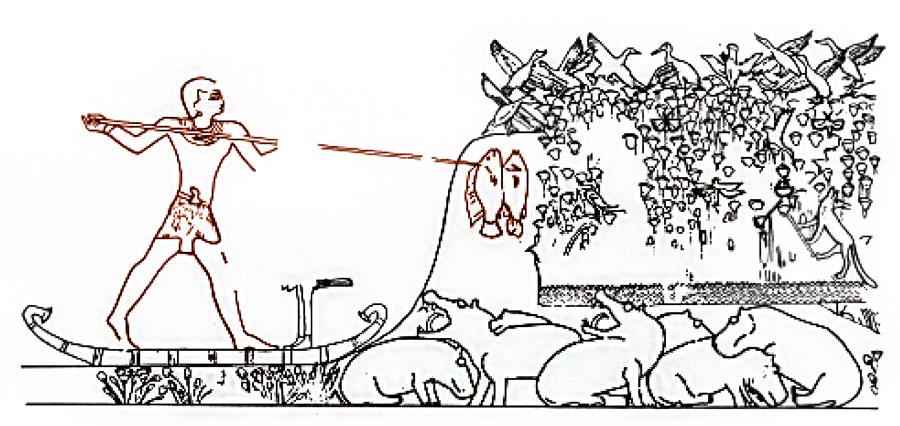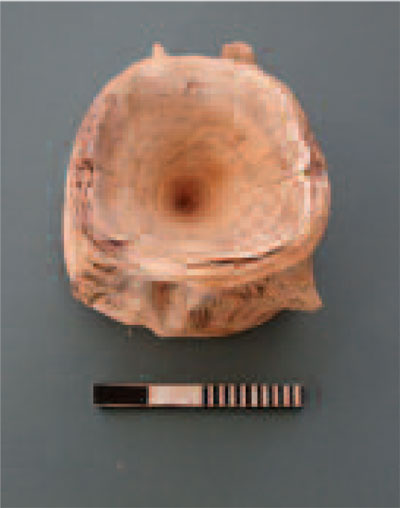
Animal bones recovered from excavations are another rich source of information. For the most part, these are leftovers from food-processing activities that included butchering, preparing, and consuming food. As such they provide a window on Egyptian cuisine and dietary preferences as well as the use of animals to produce wool, hides, and bone tools and to provide traction for pulling vehicles and plows.
Archaeologists increasingly study animal remains in order to understand food procurement in ancient Egypt. Provisioning is a fundamental concern in any society, and food is both imbued with social meanings and regulated by status, taboos, and/or rituals. The refuse deposits uncovered in Senwosret III’s mortuary temple at South Abydos and the town of Wah-Sut provide a rare opportunity to study most of the phases of Middle Kingdom food processing.
Cattle Above All
Animal use at South Abydos included the intense breeding, processing, and consuming of cattle, resonating well with North African traditions of cattle husbandry. Ancient texts, including New Kingdom price lists, tell us that cattle were the most valued providers of meat. Cuts of beef were appear on offering lists and on offering tables, further indicating Egyptian preferences. A seal impression found in the mortuary temple at South Abydos names the “Overseer of Cattle Stalls, Ameny,” illustrating the importance of cattle breeding.
Sheep and goats (Egyptian “little cattle”) were also of great importance as meat offerings and for their hair, hides, and dairy products. Although sheep and goat bones are notoriously difficult to distinguish (particularly when butchered, cooked, and exposed to soil for millennia), we have found three goat bones for every sheep bone at South Abydos, suggesting that goats were much more common here than at most Egyptian sites where sheep predominate. This may not be surprising given the amount of cattle at South Abydos. While sheep would have competed with cattle for floodplain grazing area, goats could have subsisted on poor-quality vegetation along the desert edge.
Despite few mentions of pigs in texts and the paucity of their pictorial representation, recent analysis of animal remains provides strong evidence for pig rearing in domestic settings throughout the Nile Valley and particularly in the delta. Although pig bones are rarely found in ceremonial contexts in South Abydos where there were prohibitions against swine, some have been uncovered in Wah-Sut’s large households, such as Building E. With a high reproductive rate and requiring very little care, pigs efficiently converted organic waste into protein.
Wah-Sut also exploited wild resources. Fish bones are common throughout the site, particularly those of catfish and the well-known tilapia that migrated into the floodplain to spawn during inundation. Here they were easily caught, making a rich nutritional supplement to bread and beer. Bones from larger fish, such as the Nile perch (up to 1.5 m long) which live only in the well-oxygenated deep river channel, indicate harpoon or spear fishing from boats. These would have been transported via donkey across the several miles of floodplain to Abydos. Cranes, storks, pigeons, and geese were some of the birds consumed. Many bird species were migratory and available on the floodplain only briefly during the winter.

People ate wild game only rarely. While the area around the Nile floodplain had been the grassland home to gazelles and antelopes before 3000 BCE, climate change after this date turned this area into the desert conditions void of vegetation that persist today. With the intensification of agriculture on the floodplain and heavy hunting during the Predynastic period (ca. 3900–3000 BCE), wild animals disappeared with their habitats.
Temple Offerings And Meals
In order to understand the circulation and consumption of animal products at the mortuary temple, we analyzed two large refuse areas abutting the temple enclosure and also the waste found near the shena. Over all, the mortuary temple waste clearly showed that cattle were frequently sacrificed to the cult of the dead pharaoh and then distributed to the temple staff.
One refuse area, located behind the East Block, was apparently the site for the final preparation and storage of offerings. Bones uncovered here came mostly from cattle, with sheep and goat also contributing a substantial part—the waste from the final stages of preparing daily offerings. The presence of catfish, a low-status food, was surprising since religious prohibitions restricted its consumption in ritual contexts. Could this area have also been a work space for low-ranking temple personnel who received modest food rations or brought fish to feed themselves?
The refuse outside the West Block, the living quarters of the priests on duty, was an immense pile made from the leftovers of choice cuts of juvenile cattle. Interestingly, this waste occasionally contained a bone of large Nile perch. Richard Redding also saw this combination of cattle and perch in highstatus contexts at the Workmen’s Village in Giza. Apparently the prohibitions against fish in religious contexts did not prevent high-ranking priests from supplementing their beef intake with perch.

While beer and bread were produced at the shena, meatless body parts of cattle (hoofs and mandibles) dominated its refuse. Besides indicating that meat processing and preparation occurred here, it also suggests that only a modest proportion of the cattle meat that was sent into the temple as an offering came back out as reverted offerings to be distributed to the shena staff. In contrast, meat-bearing sheep and goat bones are plentiful here, probably because these offerings did make it back from the temple to be eaten here.
Town Meals
Due to a complex sequence of occupation and a fairly disturbed archaeological record, it is difficult to discern who ate what in the town. Deposits inside and around the Mayor’s House, however, contain large amounts of cattle remains, probably deriving from the reverted temple offerings since the mayor was also the temple’s high priest. This household also consumed large quantities of sheep and goats, along with pigs and a substantial amount of catfish. The latter may have been consumed by the lower-ranking administrative or granary staff. Other elite households, such as Building E, had proportionally fewer cattle but more sheep, goats, and pigs. Fish was also frequent, but less common than at the Mayor’s House, perhaps indicating a smaller number of attendants attached to these elite households.
Beyond The Texts
Animal exploitation at South Abydos strongly emphasized meat-production and consumption. As expected in a hierarchical society, there was a strong correlation between socioeconomic status and diet. Different social groups had diets with differential access to animal resources. The archaeological distribution of food remains correlates well with textual records, with the exception of a few surprises hidden in the waste. The presence of pig remains in the town and fish remains in and near the temple lead us to question the extent of food prohibitions mentioned by much later classical writers, such as the 5th century BCE reference by Herodotus to an Egyptian prohibition against swine. The study of faunal remains augments information available from papyrus texts and improves our understanding of the relationship between idealized representations of ancient Egyptian dining and its reality.
